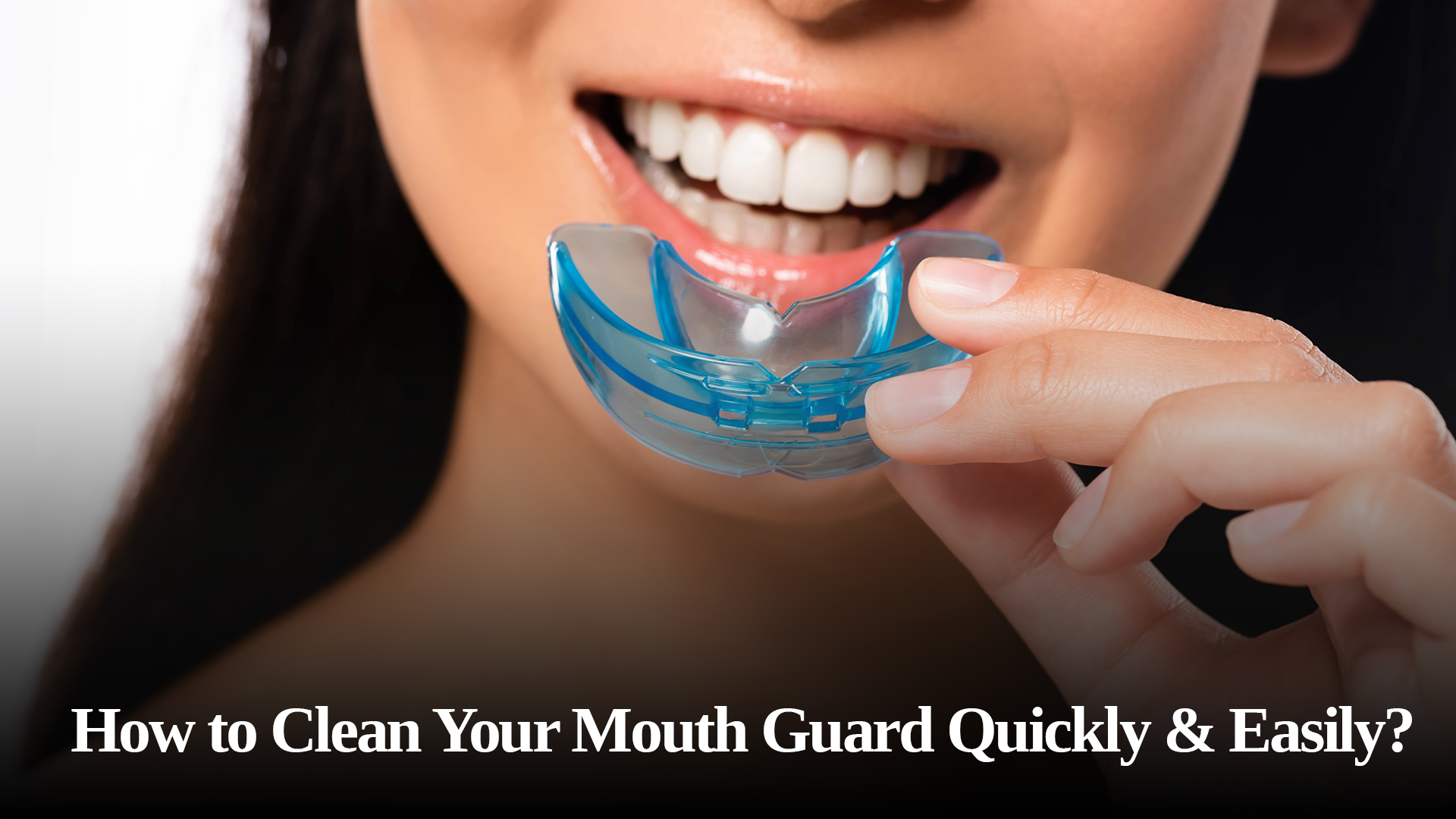
How to Clean Retainers: 12 Tips and Tricks
Whether you’re about to start Invisalign or preparing for post-treatment retention, you need to know how to care for and clean your retainers. It can be a little overwhelming, but don't worry; we've done the research and consulted dental professionals to create this list of 12 retainer cleaning tips and tricks.
These tips work whether you have a Hawley retainer (those hard plastic versions supplemented by wires) or the clear plastic version, so let’s get started!
How to Clean Retainers 101
A great goal to set for yourself is to clean your retainer as often as you brush your teeth. This means in the morning when you wake up, after meals and before you go to sleep. Brushing between meals is crucial for people straightening their teeth with clear aligners, because any food particles leftover after a meal that get trapped between a retainer and your teeth or gums will become a breeding ground for bacteria. Not only will this cause your retainer to smell and taste bad, it can also corrode your teeth.
So habits are key to maintaining proper oral hygiene during your treatment, and it helps to have essential accessories like Smilesaver® along for the ride so you can clean your retainers on the go. Once you create positive and healthy habits, you’ll have a routine that makes keeping your retainers clean a lot easier because you’ll be preventing the build up of oral bacteria in the first place.
However, even perfect hygiene won’t keep your trays clean and clear. They’re going to need some special attention along the way. So here are our 12 tips for keeping your retainer clean.
1. Wash your hands!
This is the best advice we can give before handling any oral appliance. You can brush your teeth 10x a day and scrub your retainers until they shine, but if you put them in with dirty hands, none of that will matter. Your mouth has enough bacteria without transferring any from dirty hands, which can also make you sick. And sick people have a harder time complying with their treatment plan. So it’s just not worth it to lose treatment time because of unwashed hands.
2. Cleaning Your Retainers On the Go
It’s easy to clean your retainers in the morning or at night when you’re already in the bathroom. But excusing yourself from the table to visit the public bathroom is where good habits go to die.
Thankfully, recent advances in portability and convenience have given us things like single-use toothbrushes and mints that can seat retainers on the go. Those single use toothbrushes can be stashed away in a purse or backpack and their small size fit comfortably in any purse or bag, so you don't have to think about bringing anything extra along. The Brushee doesn’t even require water, as it is activated by your saliva and can give your teeth a quick cleaning anywhere.

The toothbrushes won’t clean your retainers, but they’ll clean your teeth and help prevent bacteria from becoming trapped within your trays. After you brush, give your retainers a pump or two of Smilesaver®. Our proprietary, peroxide-free formula requires no rinsing; just spray, wait 60 seconds, and then get on with your life! It’s no substitute for brushing after meals, but it will make a huge difference in the overall cleanliness of your retainers and how you feel wearing them.
3. Clean Retainers With At Home Supplies
Even with proper cleaning and maintenance, your retainers will likely build up a film of plaque over time. If this is your experience, making a 1:1 solution of distilled white vinegar with warm (never hot!) water is an all-natural way to help dissolve away particulates and loosen stuck on grime. Simply soak your retainer for 15-20 minutes in the vinegar solution, remove them and follow with a gentle brushing with a soft-bristled toothbrush or sponge to break up any film. Repeat the process as necessary up to 3 times.

4. Use Toothpaste For Clean Aligners (But Not Any Toothpaste)
This is really a no brainer, right? Well, almost. Toothpaste is a great way to clean teeth, because that's exactly what it was designed to do! But most toothpastes contain abrasive cleaning agents that can scratch your aligner trays. You can still use toothpaste to give a quick scrub (especially useful after you’ve been brushing your teeth and give some dilution to the paste itself), but not just any toothpaste. Lookout for any that contain any kind of abrasive compound or "scrubbing" enhancer. Gel toothpastes work well for this, and are very inexpensive. Remember, even with a gel toothpaste, you should always be gentle with your retainer. The object here is to make it last as long as possible!
5. Use a Specialized Retainer Cleaner
Much more preferable to denture cleaners are specific products designed to protect the life and health of your retainer, but they are not all created equal. Read the box and make sure the product you've selected works with your type of retainer and any product reviews to see what other people are saying about how "product x" worked with "retainer y". It never hurts to be too informed before making a purchase to protect your expensive mouthpiece. And remember: read the directions. Never soak a retainer for longer than the manufacturer recommends!
6. Clean Your Retainer Case
Your mouth and hands can be clean, along with your retainers, but if you store them in a dirty case, bacteria will find their way onto them. So your diligence for personal hygiene will need to extend to your accessories as well. Give your case(s) regular attention with warm soapy water and an occasional run through the dishwasher to kill the germs and give your retainers a clean place to call home (when they aren’t in your mouth).

7. Replace Retainers As Scheduled
Retainers are expensive, but like other appliances, they are going to break down. Just like shoes and glasses, your retainers won’t last forever. Clear plastic retainers should be replaced generally every six months, and even the most pristinely maintained retainer will fail after a lot of use, so do not be afraid to contact your dental professional to schedule a fitting or to order a replacement.
8. Don't Let Your Retainers Dry Out
For a lot of retainers, dryness is the enemy. When cleaning, letting your retainer dry out can help plaque and stuck on foods bond more strongly to it. Additionally, the cycling between wet and dry and wet and dry will eventually cause your retainer to crack and degrade. For many retainers, letting them soak in distilled water when not in use can boost the life of your retainer, giving you months of extra use.
9. Don’t Use Harsh Chemicals to Clean Retainers
Harsh chemicals are a bad choice when it comes to oral devices. While using dish soap is just fine, many cleaning solvents are NOT. They might remove 99.9% of bacteria, but they can also remove some of the retainer itself. Not only will this quickly degrade your retainer, it can be harmful to you if the chemicals aren't washed away properly and the retainer is reinserted. That's why it's best to completely skip them.
10. Get Them Professionally Cleaned
Going in for your 6-month cleaning? Bring in your retainer and ask them to clean it for you. They can run it through their ultrasonic machines suitable for cleaning and sanitizing their own tools. You'll walk out of that appointment with a retainer nearly as clean as the first day you got it!

11. Use Cotton Swabs for Detailed Cleaning
As the box suggests, cotton swabs aren't for your ears, but seemingly for everything else. Well, here's one of those things. A cotton swab with a bit of non-abrasive toothpaste or dipped in warm soapy water will help you clean those small cracks and crevices in your retainer to remove even the most stubborn particles and grime. You probably already have some at home, so why not give it a shot tonight?
12. Freeze it to remove gum
We're not here to judge you, we are here to help (but we still have to say: don’t chew gum with your retainers!). Now if you have made this mistake, don’t despair; an old trick from youth (or a current trick if you’re a parent with gum-chewing kids) can remove gum from your retainers: extreme cold. After you remove as much gum as possible, stick your retainers in the freezer for 15-20 minutes and then use a cotton swab to remove what’s left. It may take 2-3 cycles of this before you remove all the gum, but hopefully this will teach you a lesson!
So if you came here for tips and tricks for cleaning your retainer, we hope this did not disappoint. You can use any number of these tips to extend the life of your retainer and keep it fresh and clean for optimal wear. Carry Smilesaver® with you wherever you go to keep bacteria down, while minimizing foul odors, bad breath, and lousy taste. Be good to your retainer while being good to yourself, and your retainer will be good to you!



Leave a comment
This site is protected by hCaptcha and the hCaptcha Privacy Policy and Terms of Service apply.